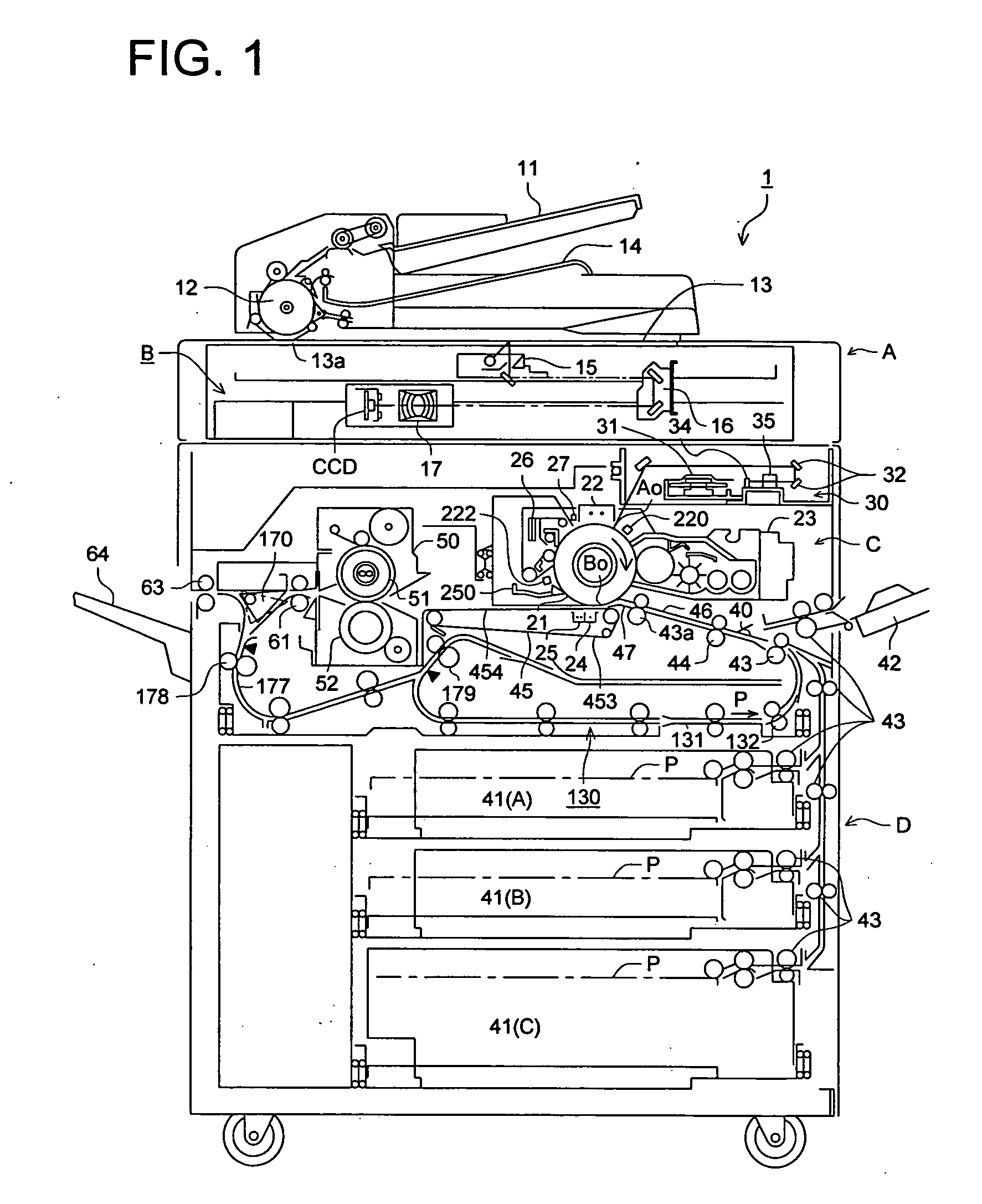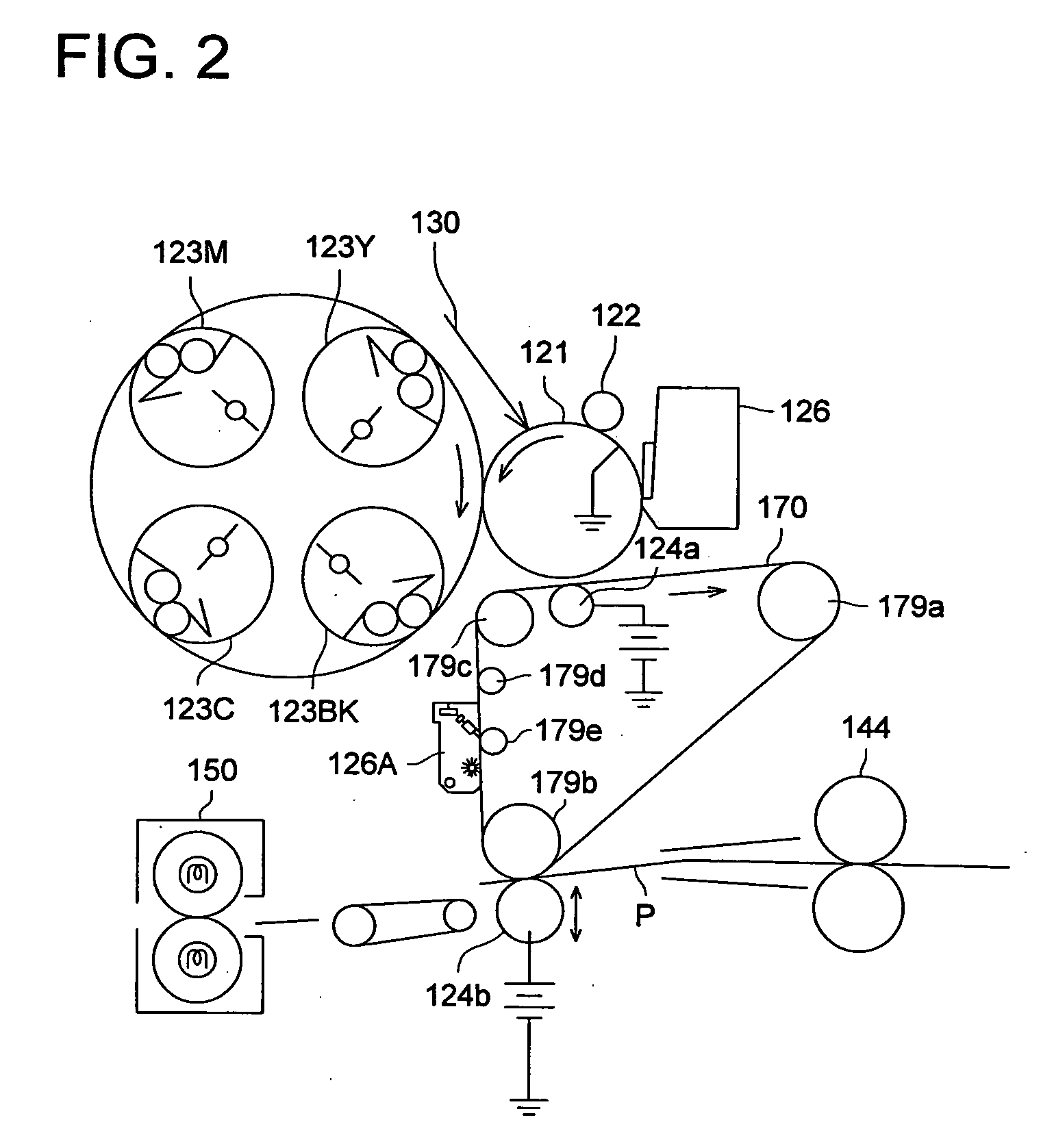Electrophotographic photoreceptor, image forming method and image forming apparatus utilizing the same
a photoreceptor and photoreceptor technology, applied in the field of electrostatic photoreceptors, can solve the problems of deterioration of electrostatic characteristics of photoreceptors, generation of abrasion on the surface of photoreceptors, and the insufficient durability of photoreceptors, and achieve stable charging voltage and high sensitivity and mechanical strength.
- Summary
- Abstract
- Description
- Claims
- Application Information
AI Technical Summary
Benefits of technology
Problems solved by technology
Method used
Image
Examples
example 1
1-1>.
[0108] An intermediate layer, comprising polyamide resin and having a thickness of 0.3 μm, was provided on an aluminum drum having a diameter of 100 mm. Next, a coating solution which was comprised of 30 weight parts of oxytitanium phthalocyanine (CGM-1), which is provided with a peaks at such as 9.5°, 9.7°, 11.6°, 15.0° and 24.1° in addition to the maximum peak at 27.3°, in a X-ray diffraction spectrum employing CuKα characteristic X-ray, 10 weight parts of butyral resin “ESLEC B (BX-L)” (manufactured by Sekisui Chemical Co., Ltd.) and 1600 weight parts of methyl ethyl ketone, was immersion coated on the aforesaid intermediate layer, followed by being dried to form a CGL having a layer thickness of 0.3 μm.
[0109] Next, a lower (support side) CTL coating solution was prepared by dissolving 500 weight parts of example compound (TL-1) as a CTM and 600 weight parts of polycarbonate resin “EUPILON Z300” (manufactured by Mitsubishi Gas Chemical Co., Inc.) in 3000 weight parts of a ...
example 2
2-1>
Intermediate Layer:
[0130] An aluminum drum having a diameter of 100 mm was coated with intermediate layer coating liquid by dip coating method, and dried with 120° C. for 30 min. to form an intermediate layer having 1.0 mm dry thickness. The dispersion liquid described below was diluted double with the same mixing solvent, left at rest over night, and filtered with RIGIMESH filter (MADE BY Nihon Pall Ltd., Filtering accuracy: 5 μm, Pressure: 50 kPa) to form the intermediate coating liquid.
[0131] Binder resin: Polyamide, 1 part (1.00 part per volume);
[0132] Rutile type titanium oxide A1 (primary particle diameter, 35 nm; surface treatment was applied with copolymer of methylhydrogen siloxane and dimethyl siloxane (mol ratio, 1:1) of 5 weight % of the titanium oxide A1), 3.5 part (1.0 part per volume);
[0133] Ethanol / n-propyl-alcohol / THF (=45 / 20 / 30 weight ratio), 10 parts;
[0134] Above described materials were mixed and dispersed with the use of sand-mill dispersion machine fo...
example 3
3-1>
[0140] An aluminum drum having a diameter of 100mm of the photoreceptor 2-1 was replaced to the aluminum drum having a diameter of 60 mm, further the lower CTL and the upper CTL were prepared with the coating liquid below. Other components and structures were the same as those of the photoreceptor 2-1.
Under Charge Transfer Layer(CTL):Charge transfer material (TL-1)675partsPolycarbonate (EUPILON Z300: made by Mitsubishi Gas600partsChemical Company, Inc.)THF / toluene (weight ratio: 7 / 3)3000partsSilicone oil (KF-54: made by Shin-Etu Chemical Co.,1partLtd.)
[0141] The above ingredients were mixed and solved to prepare the under CTL coating liquid 2. This coating liquid was coated on the above-described CGL with dip coating method, dried 70 min. with 110° C., and the under layer of CTL having 15.0 μm dry thickness was formed.
Upper Charge Transfer Layer (CTL):Charge transfer material (TS-1)220partsPolycarbonate (EUPILON Z800: made by Mitsubishi Gas600partsChemical Company, Inc.)THF / ...
PUM
| Property | Measurement | Unit |
|---|---|---|
| number average primary particle diameter | aaaaa | aaaaa |
| thickness | aaaaa | aaaaa |
| number average primary particle diameter | aaaaa | aaaaa |
Abstract
Description
Claims
Application Information
 Login to View More
Login to View More - R&D
- Intellectual Property
- Life Sciences
- Materials
- Tech Scout
- Unparalleled Data Quality
- Higher Quality Content
- 60% Fewer Hallucinations
Browse by: Latest US Patents, China's latest patents, Technical Efficacy Thesaurus, Application Domain, Technology Topic, Popular Technical Reports.
© 2025 PatSnap. All rights reserved.Legal|Privacy policy|Modern Slavery Act Transparency Statement|Sitemap|About US| Contact US: help@patsnap.com



